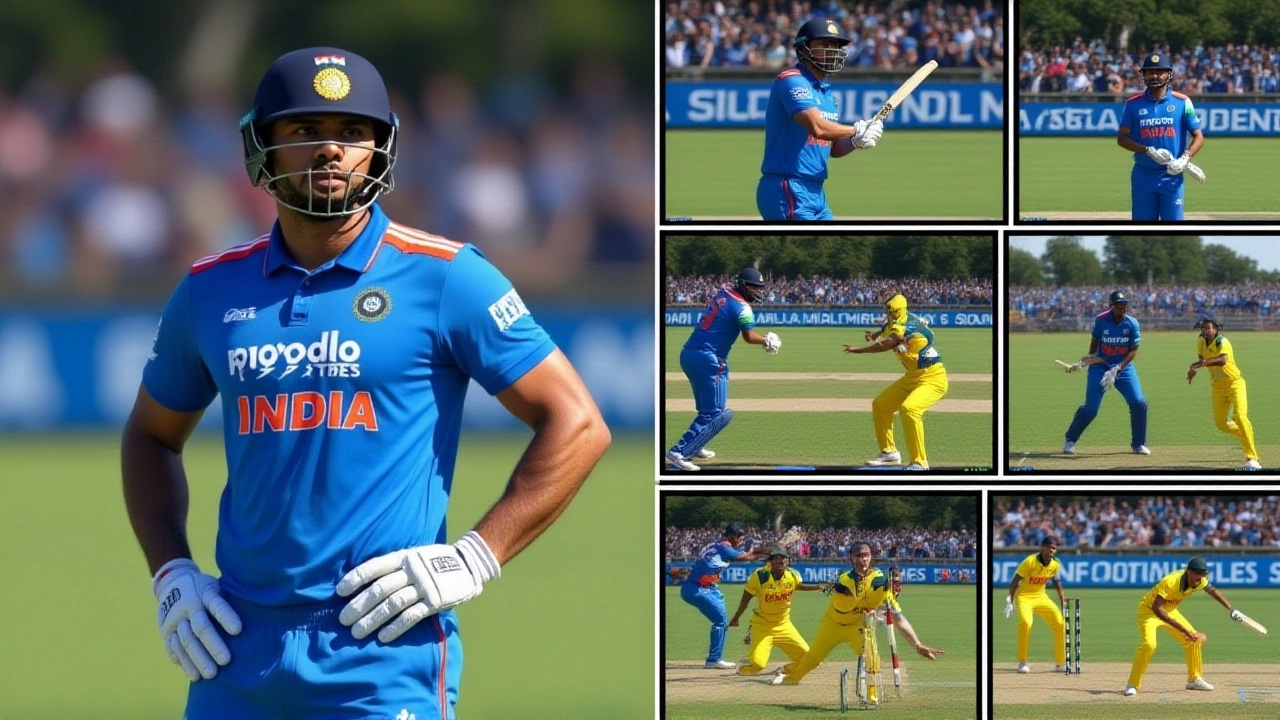When Harshit Rana, fast bowler for India national cricket team ripped through Australia's middle order at Adelaide Oval on 23 October 2025, the moment felt like a flicker of hope even though the match ended in a narrow defeat.
Match Overview
The second One‑Day International of the three‑match series kicked off at 4:11 PM IST under a clear South Australian sky. The fixture – officially Australia vs India 2nd ODIAdelaide Oval – saw the hosts posting 215/5 after 39.3 overs, with Cooper Connolly and Mitchell Owen anchoring the chase.
Australia’s chase was anchored by Matthew Short, who had drummed up 74 runs off 78 balls before falling in the 36th over. His innings was a blend of two towering sixes and four crisp boundaries, but a looping pull off a bouncer from Rana sent the ball sky‑high, only for Mohammed Siraj to collect it at deep square‑leg – a catch that erased the earlier dropped chance when Short was on 55.
Rana's Breakthrough Spell
Rana’s impact came early. He first dismissed opener Travis Head for 28, sparking a ripple of nervousness through the Australian top order. The second wicket – Short’s – came after a short‑ball barrage that forced the batsman into a risky pull. It was Rana’s second wicket of the day, but also his second ODI wicket of the series, having gone wicket‑less in Perth.
Statistically, Rana finished with figures of 2 for 44 off eight overs – a tidy economy on a surface that traditionally rewards spin. His pace, coupled with a disciplined line, gave India a much‑needed breather after a shaky start. Yet, as the innings progressed, Rana slipped into a rhythm of “short ball after short ball,” a line later echoed by former Indian opener Krishnamachari Srikkanth during his post‑match analysis.
Strategic Decisions and Spin Debate
Captain Shubman Gill stuck with Rana in the XI, despite a chorus of critics urging the inclusion of left‑arm wrist spinner Kuldeep Yadav. Historically, the Adelaide Oval’s flat pitches and slow turn have been a spin bowler’s playground, a fact that made the decision all the more eyebrow‑raising.
The choice paid off modestly – Rana’s early breakthroughs offset the loss of a specialist spinner, but the lack of a genuine turn‑expert allowed Australia’s middle order to settle. In the first ODI at Perth, Yadav’s omission would have been a footnote; at Adelaide, it became a talking point.
Reactions from Former Players and Analysts
On 24 October 2025, Srikkanth posted a candid video on his YouTube channel, saying, “Rana bowled very well in his first spell and picked up two good wickets. I thought India had won the match. In fact, when he picked up the second wicket, I thought he had a good chance to be the Player of the Match with a crucial 24 and two wickets. But exactly then, he bowled short ball after short ball and got smashed.”
Other pundits offered a more tempered view. Former Australian cricket analyst Ian Healy noted, “Rana’s pace and bounce are exactly what you need on a hard Australian surface, but the key in Adelaide is to mix it up. His over‑reliance on the short ball gave the Aussies a chance to attack.”
Series Implications and Expert Analysis
Australia’s two‑wicket victory handed them an unassailable 2‑0 lead, meaning they clinch the series with one game to spare. The win also highlighted India’s ongoing batting woes. Returning stalwarts Rohit Sharma and Virat Kohli failed to make a dent in the first ODI, and they were unable to turn the tide in Adelaide.
Cricket statisticians point out that India’s win‑loss ratio in ODIs against top‑three ICC‑ranked teams dips below 30% when the opposition posts 200+ runs. The current series adds another chapter to that trend, reinforcing the need for a more adaptable middle order.
Looking Ahead: What’s Next?
The final ODI is slated for 27 October 2025 at a venue yet to be confirmed. All eyes will be on whether India can regroup, perhaps reinstating Kuldeep Yadav or giving Rana another chance to showcase his pace. The series also serves as a litmus test for India national cricket team ahead of the upcoming World Cup qualifiers.
Meanwhile, Australian captain Pat Cummins (not yet mentioned but a primary figure) will aim to keep the momentum, ensuring the bowlers stay tight and the batting line‑up capitalises on the modest totals posted by India.
Key Facts
- Event: Australia vs India 2nd ODI – 23 Oct 2025, Adelaide Oval.
- Harshit Rana’s figures: 2/44 in 8 overs.
- Matthew Short dismissed for 74 (78 balls).
- Australia won by 2 wickets, clinching the series 2‑0.
- India’s selection controversy: Rana retained, Kuldeep Yadav benched.
Frequently Asked Questions
Why did India keep Harshit Rana over Kuldeep Yadav?
Team management believed Rana’s pace would exploit the hard‑batting surface at Adelaide, hoping early wickets would disrupt Australia’s chase. The decision sparked debate because the venue traditionally favours spin, a factor many analysts felt was overlooked.
How did Matthew Short’s innings influence the match outcome?
Short’s 74 anchored Australia’s chase, stabilising the innings after early wickets. His partnership with Cooper Connolly pushed the required run‑rate down, ultimately allowing Australia to scrape home with just two wickets left.
What does the series result mean for India’s ODI prospects?
Losing 2‑0 highlights India’s vulnerability against high‑tempo attacks and raises questions about the middle order’s consistency. The defeat could prompt a reshuffle ahead of the World Cup qualifiers, with a possible return to a more spin‑centric attack.
How did the crowd react to Rana’s wickets?
The Adelaide crowd erupted after each of Rana’s dismissals, especially the Short wicket, which temporarily shifted momentum. However, the excitement faded as Australia edged closer to the target, leaving Indian supporters disappointed but hopeful about the upcoming final ODI.
Who are the key players to watch in the final ODI?
All eyes will be on Shubman Gill’s leadership, Rohit Sharma’s return to form, and whether Harshit Rana gets another spell. For Australia, Pat Cummins’ bowling and David Warner’s power‑hitting will be pivotal.

